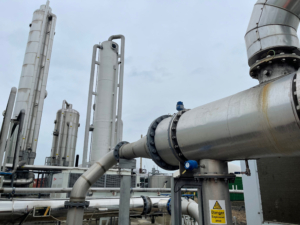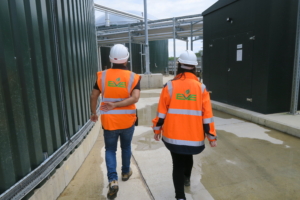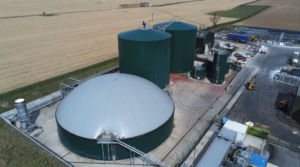Key Performance Indicators for Operating Anaerobic Digestion Plants
Anaerobic digestion (AD) plants offer an effective, proven method of generating renewable energy and reducing greenhouse gas (GHG) emissions, creating a circular economy by providing biomethane gas and power-to-grid from domestic waste or energy crops. However, to ensure AD plants are operating at maximum efficiency, continuous monitoring and optimisation of key performance indicators (KPIs) must be followed. A multitude of factors contribute to an efficient, safe and profitable AD plant.
When it comes to managing or onboarding AD plants, Eco Verde Energy (EVE) delivers success by following a standardised audit approach to help a plant achieve its full potential. In this blog, we outline essential operational and health and safety KPIs to consider when running a successful AD plant.
- AD plant production output
Understanding the production output and the potential of what an AD plant can process and deliver is the most obvious KPI for an AD Plant. This can be monitored and measured by the combined heat and power (CHP) generated from energy crops and plant waste per hour, expressed as MWh for electricity and cubic metres of biomethane for gas.
Forward planning is a crucial aspect of keeping a plant running at optimum output levels to meet key revenue-generating activities and CHP agreements. To ensure consistency, it is important to implement a management system whereby the quality, control and timely delivery of feedstocks is closely monitored alongside biogas production and yield.
- Equipment maintenance
A safe and efficient plant relies on the successful operation of its equipment. Malfunctions can have the potential to be dangerous and can lead to costly downtime. Regular maintenance checks should be carried out to detect and resolve any issues before they become problematic. Implementing a planned maintenance schedule and setting specific KPIs around this, will ensure equipment is safe and reliable and support efficiencies across the plant and wider business.
- Feedstock supply and consistency
Having a regular and reliable supply of feedstock(s), preferably sourced from local homes, farms and businesses, will ensure a true circular economy (generating energy from waste), minimising costs and maintaining consistency of outputs.
Without adequate forward planning, fluctuations in supply can occur leading to reduced output and production losses. Setting KPIs around sourcing of feedstock and quality levels, for example, can ensure feedstock supplies remain consistent and reliable.
- Health and safety and environmental risks
Meeting legal compliance requirements is the key driver of developing a successful risk management framework. EVE’s approach is to undertake regular reviews by the HSEQ team to ensure that the legal register is kept up to date and reflects the actions undertaken to ensure operations are undertaken in line with legislative requirements. These actions are tracked through to a site operations team to ensure delivery of the requirement.
Through the development of SMART objectives, performance indicators can be defined and these KPI’s can be monitored to demonstrate the effectiveness of action, and corrective action taken where required. For example, EVE use a standardised audit and inspection criteria to internally benchmark the performance of their AD plant client’s HSE performance. This provides the client with a quick reference to HSE performance but also how good this is compared to other AD sites.
Health, Safety and Environment risks need clearly defined lagging and leading indicators are key to ensure that effective action is taken to reduce the likelihood of incidents. EVE focuses on a proactive approach to risk management with regular site visits, proactive hazard and near-miss reporting, training and awareness programmes and open forums with site teams to identify improvement and reduce risk.
- Team cohesion and morale
People are the driving force of any business, and an AD plant is no different. Nurturing a positive working environment by inspiring a clear sense of direction, stability and purpose will help to achieve a common goal. Having shared objectives, with a unified sense of purpose and a skilled team provides a solid foundation for addressing wider operational factors and reaching other business KPIs. Providing training and identifying opportunities for progression and upskilling can give existing and new employees a sense of pride and security within their roles, improving morale and productivity.
To truly assess the performance of an AD plant, operators must look beyond singular issues and productivity metrics to consider KPIs across the business, including operational maintenance, compliance with health and safety regulations and building a supportive team environment.
Following such procedures has enabled the EVE team to set internal benchmarks towards achieving a target of 90% for operational performance and health and safety compliance.







